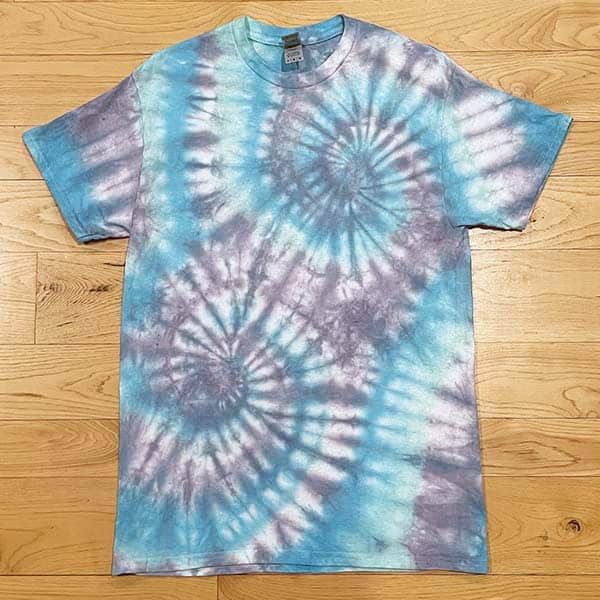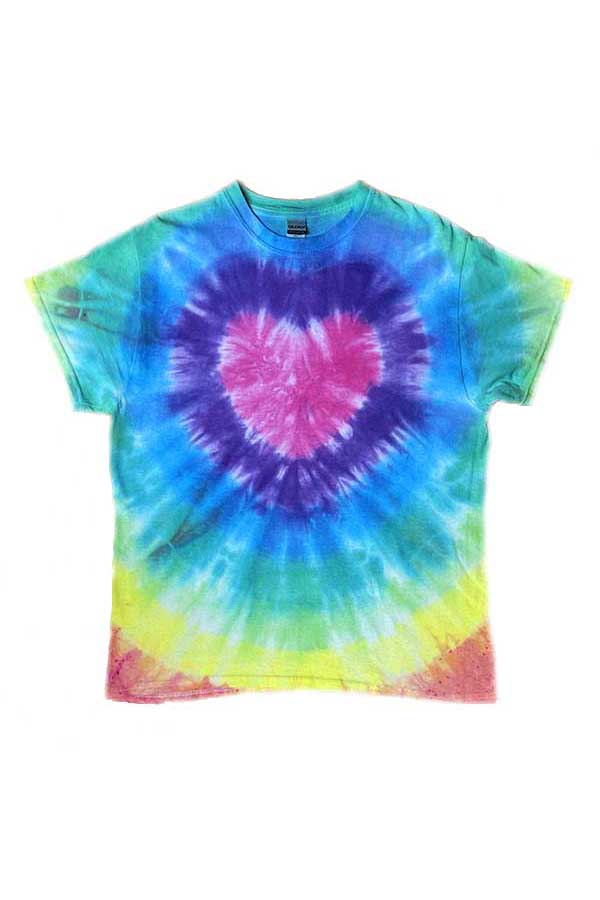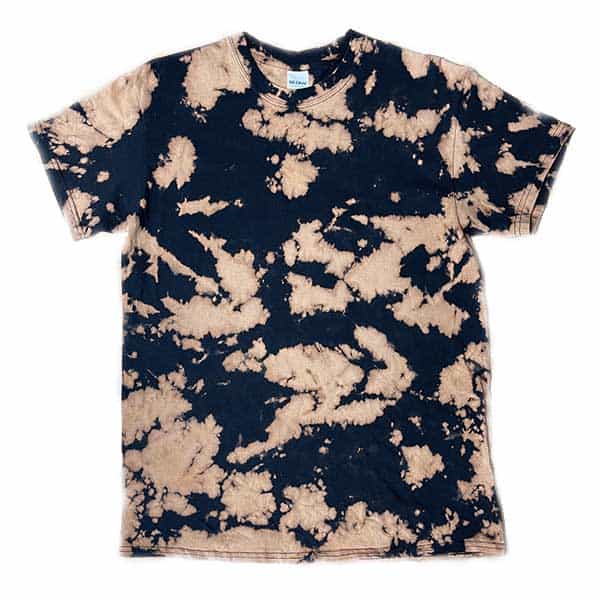How To Pastel Tie Dye
Tie dye is very well known for its vibrant, popping colors, but what about when you want a soft pastel tie dye? Well, there are some great options out there as well as a few tricks you can do to get a more subtle take on tie dye. We will walk through all of them as well as two popular and pretty tie dye patterns (rainbow and double spiral) that anyone can do with pastel tie dye.
For the pastel patterns I am going to show you, I used the colors from the kit I highlight below. I am using an Adult Medium 100% cotton t-shirt for the double spiral and a Kids X-Small 100% cotton t-shirt for the rainbow, but any size shirt will work for those designs.

FOR MORE TIE DYE 101 BASICS: HOW TO TIE DYE: THE ULTIMATE GUIDE
TO SEE MORE ITEMS YOU CAN TIE DYE WITH THIS PATTERN: 30 THINGS TO TIE DYE
HOW TO CREATE Pastel Dye Colors
There are 3 main ways to create pastel tie dye colors: Pastel Tie Dye Kits, Using Natural/Synthetic Blend Fabrics, and Diluting The Dye To Create Pastel Colors. Let’s discuss the pros and cons of each method.
Pastel Tie Dye Kits
The easiest way to achieve pastel colors is by buying a kit that is labeled specifically for pastel colors. This one from Tulip I bought at Michael’s and is used for both designs (see pic). The colors are saturated, but still much softer than Tulip’s other vibrant selections. Tulip also has a larger selection of pastel colors with an 8-color or a 12-color kit for those of you looking for more variety.
Using Natural/Synthetic Fabrics To Create Pastel Tie Dye Colors
If you already purchased dye for tie dyeing and its not pastel, then this tip is for you. When we tie dye, one of the most important things to pay attention to is the type of fabric you select, specifically what its made out of. For the dye to be as bright as possible, you want 100% natural fibers (i.e. cotton, linen, silk, etc) or as close to 100%. The more synthetic fibers, such as polyester or nylon, there are, the weaker the dye color is, which creates a softer, more pastel-like color. Typically, I would suggest staying away from 50/50 polyester/cotton blends, but in the case of pastel tie dye this is perfect! You do need some natural fibers for the dye to take at all, so 50% natural/50% synthetic is ideal. Here are sweatshirts I made my daughters with the same tie dye kit. One is 50%Cotton/50% Polyester and the other is 100% Cotton. BIG difference in the vibrance of the colors. Both pretty, but very different and the 50/50 one has softened more with washing and time.


Diluting Tie Dye To Create Pastel Colors
If you already have the dye and the item (and its not partially synthetic), then there is a way to get pastel colors, but I must warn you that its inconsistent. You can dilute (and I mean GREATLY dilute) the dye with water to get a weaker color. The ratio is typically 10-20% of the original strength of the dye. Once you dilute the dye, test it on paper towel or a scrap of similar cloth if you have it to see if more water needs to be added. This is NOT my go-to suggestion for pastel colors, but I wanted to put it out there because it is a technique that can work.
Pastel Tie Dye
What you’ll need:
- White Shirt
- Rubber Bands
- Dye Kit (Which Includes Rubber Bands, Gloves, And A Plastic Sheet)
- Plastic Wrap
- Plastic/Rubber Gloves
- Plastic Covering For Work Surface
- Painter’s Tape (optional)
- Baking Tray With Rack (optional)
- Paper Towels/Rags
- Gallon Plastic Bag or Plastic Wrap
- Washable Marker (for the Rainbow Pattern) (I like to use my kids’ Crayola Washable Markers)
- Plastic Wrap (for the Rainbow Pattern)
Baking sheet/rack versus just a workspace covered in plastic: I have dyed MANY shirts on just a covered workspace. As long as you have a ton of paper towels and are careful, you will be fine. It is, however, MUCH easier and more environmentally friendly (i.e. paper towel usage) if you use a baking sheet and rack because any excess dye goes directly onto the pan, away from your shirt, and you barely need to use any paper towels. If you plan on tie dyeing a number of items now or in the future I strongly suggest the investment.
Pastel Rainbow TIE DYE
Creating The Pattern
Usually we start with a damp shirt, but for this design you’ll want to start with a dry shirt. (You can technically still make it work with a damp shirt, shown below, because I forgot to leave this one dry. It is just a bit harder to write on the shirt.)
1. Lay the shirt flat on your work surface. Using the washable marker, create the rainbow arch lines on the shirt. For this one, I used 4 colors, so I needed 5 lines to show where each color should go. NOTE: You can use more or less colors. Just mark the number of lines accordingly.

2. Once you have all of the lines marked, gather the shirt along the top line of the rainbow. When it is completely gathered up I like to make the starting and ending points of the line touch. That way it will be easier to wrap the rubber band around the marker line.
3. Take your first rubber band and wrap it around the marker line several times (so its tight). After the rubber band is on, you can adjust the marker line, if needed, in case it moved.
4. Continue to wrap the rubber bands on the lines to create the sections for the bands of colors.

5. Now is the time to make the shirt damp. Since the rubber bands are already in place, if the marker starts to wash off it will be fine. Dunk the shirt in a bucket of water or sink and wring it out before starting to dye.
6. Because we are leaving the rest of the shirt white (aside from the rainbow), we will want to protect those white areas. Wrap both ends of the shirt, outside of the rubber bands with plastic wrap. Be sure to get it around a few times, so it doesn’t fall off and make sure the very end is closed, so dye cannot get in. (NOTE: If you forget, like I did with this shirt, before I started to dye it, that is ok IF you are very careful with the dyeing. Just make sure to wrap the ends after you dye it and before you place it in the bag to cure, so extra dye cannot ruin the design.)
Dyeing The Shirt
7. Set your shirt on the baking sheet/cooling rack or covered workspace and put on your gloves. As pastels are generally weaker, softer colors, you can start with any color. I suggest starting at one end and adding dye to the ring. Make sure to add extra dye and let it soak in, so it can get to the center of the shirt. Turn the shirt when needed to cover the entire ring.
8. Continue to add the different colors to create your rainbow (and then add the plastic wrap to the ends if you didn’t before).
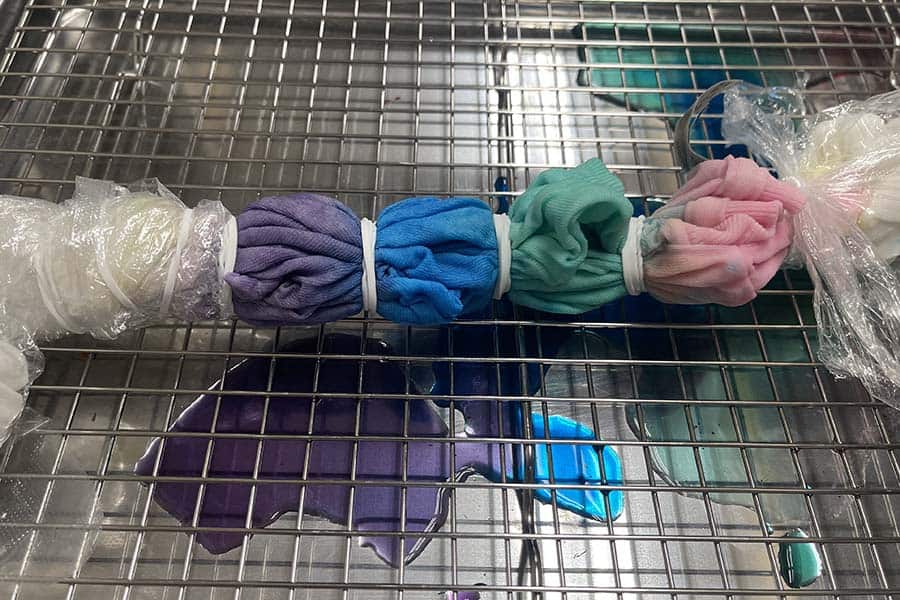
9. Once the rainbow has been dyed, carefully place it in the gallon plastic bag or wrap the rest of the shirt in plastic wrap. Personally I prefer the plastic bag as you can easily seal it, label it (if you are dyeing more than one item) and move it if needed without worrying about dye leaking out.
PASTEL DOUBLE SPIRAL TIE DYE
Creating The Pattern
1. Start with a damp, but not wet, shirt for this design. The shirt could be fresh out of the washing machine. If you washed it a different day, like I usually do, then just dunk the shirt in a bucket of water or sink and wring it out before starting.
2. Lay the shirt flat on your work surface. Using a clothespin or your fingers, pinch where the center of the spirals should be and start twisting both in the same direction. Keep twisting while the shirt winds up around the centers of the spirals.

3. Once the shirt is completely twisted up, place the first rubber band in the center, between the two spirals by carefully sliding it under/over the shirt. Add the second and third rubber bands across each spiral (parallel with the first one). Add the forth and fifth rubber bands to one spiral to create an X. Repeat with the other spiral. Don’t worry if it looks a bit messy. We’ll fix that in the next step.
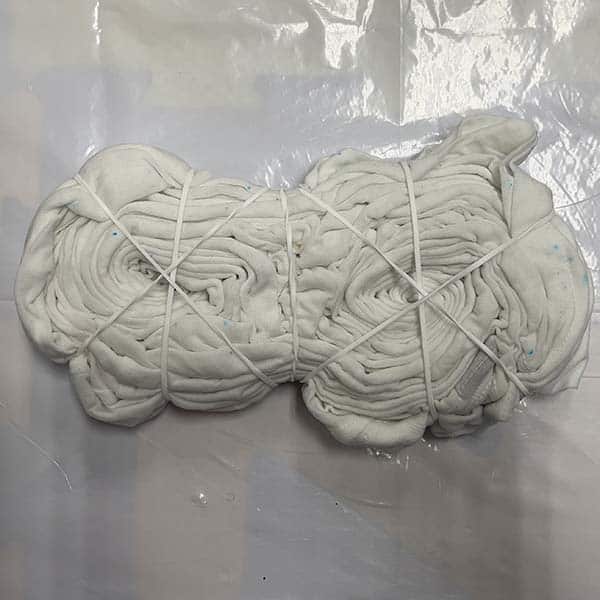
4. Once all rubber bands are on, now is the time to adjust them, so that they are evenly spaced around the shirt. You can also tuck any loose ends into the rubber bands, so the figure 8 shape is nice and tight.
Dyeing The Shirt
5. Set your shirt on the baking sheet/cooling rack or covered workspace and put on your gloves. As with the other pattern, pastels are all similarly weak, soft colors, so start with any color and fill in a wedge of the shirt. Make sure to add extra dye and let it soak in, so it can get to the center of the shirt.
6. Since we are creating a double spiral, the colors need to go in certain wedges to create the pattern. With 3 colors, like in this example, dye the opposite wedge in the same spiral. Take the same color dye and repeat the same pattern in the same wedges on the second spiral.
7. Continue to add the rest of the colors, working in the same pattern. TIP: If you are using the baking sheet, you can turn the sheet and not have to touch the shirt while dyeing.
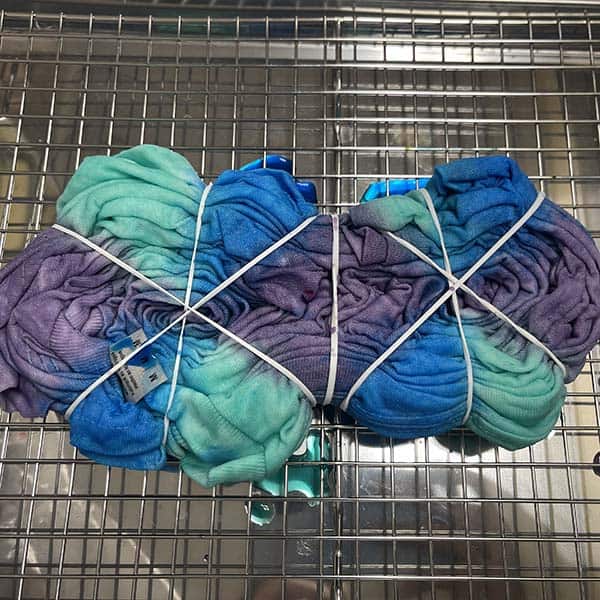
8. Flip the shirt and repeat on the other side.
9. Once both sides of the shirt have been dyed, carefully place it in the gallon plastic bag or wrap the rest of the shirt in plastic wrap. Personally I prefer the plastic bag as you can easily seal it, label it (if you are dyeing more than one item) and move it if needed without worrying about dye leaking out.
Rinsing And Washing (BOTH PATTERNS)
10. Let the shirt sit for minimally 6-8 hours and up to 24 hours max, so the dye can cure. This will help produce the brightest colors.
Once the dye has cured, it’s time to rinse and wash the shirt. This is an important step as, if done in the wrong order or rushed, it can muddy up the nice colors and pattern you created.
11. Take the shirt out of the plastic bag and put it in a sink or bucket (something that can get dirty and won’t stain). We have a stainless steel kitchen sink, so I use that. You can cut/take off the rubber bands and then rinse the shirt in COLD water. The cold part is critical because it allows excess dye to wash out slowly while not dyeing the remaining white parts of the shirt. (NOTE: For the rainbow tie dye, BEFORE you cut the rubber bands and take off the plastic wrap, dip the dyed rings in the water, swishing them back and forth a bit. See How To Rainbow Tie Dye for additional details with pictures.)
12. Repeat this rinse process several times until the water is fairly clear.
13. Once the water is fairly clear, repeat the rinse process once more, but with luke warm water (not HOT). This should get the last bit of excess dye out before putting it in a washing machine.
14. Once the shirt is thoroughly rinsed, you can wash it in the washing machine either by itself or with several other rinsed tie dye items. If I’m tie dyeing a bunch of shirts, I will put up to 6 in one load. Wash on warm or cold with a bit of detergent.
15. Dry the shirt(s) in dryer or let air dry. Personally I prefer air drying as it extends the life of the dye color (as they will eventually fade a bit with washing and wear).
NOTE: Wash the shirt by itself or with other tie dye items for the next few washings before adding it in with your other clothes.
No matter which pattern you pick, you will have a soft pastel tie dye item made by you! Super easy and beautiful! Enjoy!

